#mongol history
Text
Khutulun, Mongolian Princess Warrior

#digital art#anime#anime and manga#anime art#artists on tumblr#anime aesthetic#anime drawing#anime style#art#artwork#history#world history#history tag#mongolia#mongol empire#mongol history#genghis khan#khan#khutulun#digital art#digital illustration#digital drawing#digital painting#drawing#lineart#my art#art style#art tag#illustration#art on tumblr
176 notes
·
View notes
Text
They say a maiden carrying a lamb can travel the entire length of the Mongol Empire alone

58 notes
·
View notes
Link
“In the early days of the Eurasian steppe, knowing how to use a bow and ride a horse could be the difference between survival or death. Wolves, enemy tribes, and other dangers lurked everywhere. “You’re pretty much out on the steppe by yourself [so] the men had to learn how to do the women’s jobs and the women had to learn how to do the men’s job,” says May. While men traditionally protected the camp and women cared for the tribe’s herds, everyone had to be ready to pick up the slack, especially if an enemy tribe decided to raid your own. “If you’re living in a group of 20 people and another 20 people ride over the hill and they want what you have, whether that be water or sheep or you name it, anything, it would be silly to have ten of [your] people just sitting on the ground,” says Greenland.
(...)
Before the late 12th century, tribes scattered across the steppe often fought each other, so every warrior mattered. If an enemy tribe decided to raid your camp, everyone, men and women, took up their bows and battle axes to defend their home.”
#history#women in history#women's history#herstory#women's history month#mongolia#mongol history#warrior women#women warriors#khutulun#alaqai bekhi#12th century#historyblr
58 notes
·
View notes
Text

Happy women's day!
And today mongolian princess Khutulun congratulates you. She was Haidu's daughter, who was a grand grandson of Genghis Khan. Khutulun struggled like a man and ruled armies. She and her father took part in the Civil war in Mongolian Empire.
#khutulun#mongol history#mongol empire#mongolia#woman#women's day#mongolian woman#nomad#female warrior
40 notes
·
View notes
Text
10 notes
·
View notes
Text
Mongolian Archery/Headcanons
- In the Middle Ages, Mongolian archery held great military significance. The earliest recorded bow shot was made in 1226 as a stone inscription, by Yisüngge, Chinggis Khan's nephew, achieving a remarkable 335-fathom (about 575 yards) shot.
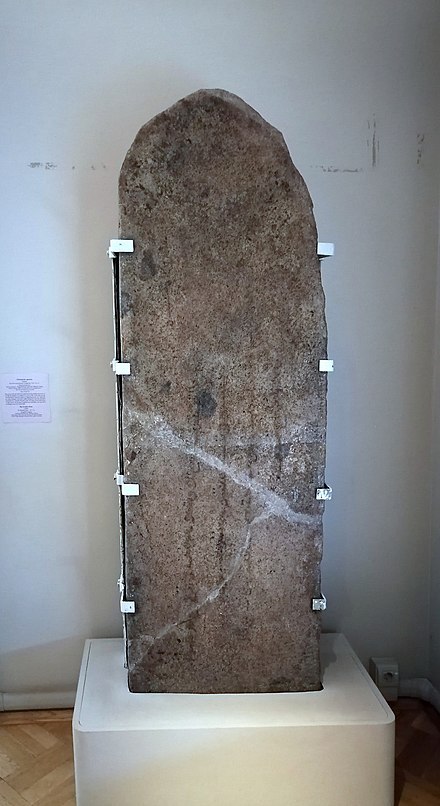
Stele of Yisüngge.
- Mongolian men were trained from a young age to become excellent marksmen, and archery played a crucial role in their military prowess.
- According to the Franciscan friar John of Plano Carpini, Mongols started shooting from the age of two, and they displayed excellent marksmanship skills from childhood to adulthood.
- Mongolian men dedicated much of their time to crafting their own arrows, which had diverse heads made from materials like bone or iron.
- The powerful tension of the bow caused it to spring back when unstrung, a challenge often mentioned in Mongolian epics as the heroic test of stringing a powerful bow.
Traditional Mongolian Bows and Arrows:
- Under the Qing Dynasty (1636–1912), all bannermen were required to undergo archery training. The military compound bows were typically about 1 1/4 meters (four feet) long, but longer bows up to two meters (six feet) were used for hunting.

- A grown man was required to handle a minimum pull weight of about 37 kilograms (80 pounds), while those participating in the imperial hunt needed to manage around 60 kilograms (133 pounds).
- Training included shooting from a standing position and also while galloping on horseback. Archers held the reins in their left hand or mouth while using their right hand to pull back the bow.

- The bows were constructed using a core made from goat horn or deer antler, covered with wood (larch, elm, or bamboo), and wrapped in animal tendons. The bows were powerful and required skill to string properly, making this task a distinguishing test of a hero's strength in Mongolian epics.
- The bowstrings were made of silk threads or leather wrapped in tendons, and arrows were crafted from materials like pine, birch, or willow. Arrowheads were made from deer antler, bone, or iron.
- Well-constructed compound bows and arrows were highly prized and fetched high prices. While powerful war bows were used for large game, simpler bows made of strips of fir or larch were used for small game.
Traditional Archery Techniques
- Mongolian archers used a unique technique of placing the arrow on the right, or outer, side of the bow. The arrow was held with the thumb and forefinger, and the bowstring was drawn with the thumb, protected by a heavy leather or polished stone ring.

- To release the arrow, the archer rolled the string off the ring. Skilled archers were trained not only to shoot from a standing position but also while galloping on horseback, using their right hand to draw the bow and holding the reins in the left hand or mouth.
Archery Competitions and Targets
- Archery competitions were an important aspect of Mongolian culture during religious rituals and Naadam games.
- In military competitions, the targets were made of sheepskin stretched over wooden frames or wooden balls placed on poles about 1.7 meters (5.5 feet) high. They were sometimes called "mangas" or monsters, as the Mongols found it disturbing to target human or animal figures.
- In Naadam games, archery was practiced using large, blunt ivory heads. The most common target was a pyramid or line of sur, made of leather straps rolled into a cylinder and filled with oak bark or leather, which the archers were required to knock over.


Decline and Revival of Archery
- By the late 19th century, firearms became more useful in hunting and warfare, causing a decline in archery competitions.
- Among the lamas of Khüriye (modern Ulaanbaatar), archery was replaced with shooting astragali (shagai) at a distance of 3 meters (9 feet) using horn or ivory bullets (ankle of sheep and goat) flicked by the middle finger from a wooden plank. This is because, due to their religious beliefs, they could not touch a weapon.

This is my own shagai set by the way!
- In the early 20th century, efforts were made to revive archery as a sport. In 1922, the army Naadam in Mongolia and in 1924, the Sur-Kharbaan (Archery) games in the Buryat Republic became annual events, marking the resurgence of archery as a recreational sport.
Changes in modern Archery
- In modern times, traditional Mongolian bows are still used in Mongolia, with archers using the traditional thumb technique.
- However, among Buryat and Inner Mongolian archers, European-style professional model bows and Western shooting styles have been adopted.
- The National Holiday Naadam rules now involve each man firing 40 arrows at a distance of 75 meters (246 feet), and women shooting 20 arrows at a distance of 60 meters (197 feet).
Headcanons
Mongolia obviously takes great pride in his cultural heritage and traditions. Archery is an integral part of his history and has been for centuries. It’s a skill that takes years to perfect - to become proficient one needs to develop both physical and mental control.
I think making bows would be a hobby of his! Not only does it keep him connected with his culture and history - as I previously mentioned, it's a skill. Bow-making/archery not only is a creative hobby, it's a physical and mental one too because of the patience and precision that is needed to create the bows/arrows, and of course, the archery itself is a mental and physical challenge!
The process of making his own bows can be both therapeutic and challenging at the same time. It requires a lot of patience and attention to detail while working with natural materials that may require specialised tools not commonly found today.
Nevertheless, he finds it to be an incredibly fulfilling experience to create something entirely by hand that is also functional and aesthetically pleasing. He enjoys painting/putting designs on them and he has quite a diverse set.
So really, bow making and archery for him:
Helps him stay in touch with his culture and history
A creative hobby
A hobby that requires mental fortitude/patience
A physical hobby
He's glad to have finally seen a resurgence and celebration of archery in his country after the rise of firearms kind of depleted it's use/popularity. It is now seen as a recreational sport in Mongolia and he treats it as a recreational sport too.
He takes pride watching participants demonstrate their skills during the Naadam Festival and other competitions where they strive to shoot targets from quite a distance away with incredible precision. The sound of the bowstring when an arrow releases - that twang sound- never gets old for him!
When he watches the younger generation take up archery, it does indeed remind him of his own experiences learning the skill as a child too.
I must say, he's still got a few tricks up his sleeve when it comes to horseback archery - even after all these years! At times, he still participates in local competitions just for fun (jock™)- he loves the the thrill of hitting a target while galloping alongside a horse.
It's definitely not something you can master overnight. Horseback archery requires an immense amount of control as well as skill from both the rider and the horse. Nevertheless, given his background as someone who understands strategy and has trained with bows since ancient times- participating is always an exciting prospect.
Sometimes he gets the chance to assist in judging in some archery competitions, which he always enjoys. He also enjoys reading about archery from different cultures too!
Of course with all of his responsibilities, he doesn't do this as often as he would like. However if you ask him about it, he'd probably do a bit of an info dump on you.
In essence, archery provides the perfect balance of discipline, creativity and physicality that he personally finds very fulfilling. Plus, it’s just plain fun!
#hetalia#aph mongolia#hws mongolia#Hetalia Mongolia#hetalia world stars#hetalia world series#hetalia world twinkle#historical hetalia#Aph Asia#Hws Asia#aph east asia#Hws east Asia#hetalia headcanons#Hetalia headcanon#OC Baatar Batbayar#Mongolia#Mongolian history#mongol history#Mongol Empire#Mongolian Empire#horseback archery#Archery#Mongolian Archery
37 notes
·
View notes
Text
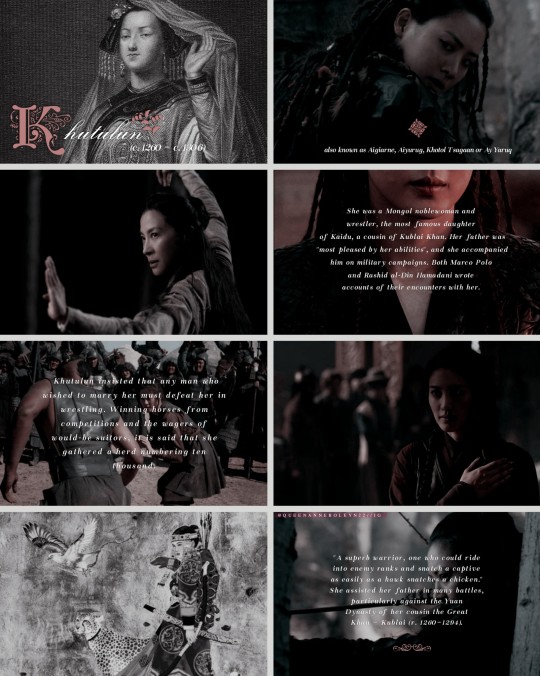
'Khutulun was the daughter of Kaidu Khan, a royal descendent of Genghis Khan who is known in history as one of the most powerful military commanders and influential rulers. Khutulun was born as the cousin of Kublai Khan at the height of civil war in the vast Mongol empire. By the time she was born, the Mongols ruled the largest part of the world, a gift they got in inheritance from Genghis Khan, who was Khutulun’s great-great-grandfather.
She was born in 1260 and by the time she was an adult, her father was ruling the entirety of Central Asia and large parts of India and Middle East as well. She grew up in the household with 14 brothers and hence, she received training in war-fares just like any other boy in the family. Her father was warring with her cousin Kublai Khan and the historical documents say that she was probably the fiercest warrior in her father’s army. Her father also trusted her counsel in the political matters as well. Although the identity of her husband has been a cause for debate among the historians, it is said that she wished to marry the man who could defeat her in wrestling and no man could ever beat her. "The superb warrior" also insisted that any man who wished to marry her must defeat her in wrestling. Winning horses from competitions and the wagers of would-be suitors, it is said that she gathered a herd numbering the ten thousand.
Nevertheless, it is said that of all Kaidu’s children, Khutulun was the favorite, and the one from whom he most sought advice and political support. According to some accounts, he tried to name her as his successor to the khanate before he died in 1301. However, his choice was declined due to her male relatives."
#kaidu khan#perioddramaedit#history#edit#history edit#khutulun#genghis khan#mongol empire#mongol history#asian history#women's history#women in history#women of history#claudia kim#marco polo#kublai khan#middle east#strong women#13th century#14th century#warrior#the middle ages#medieval history#historical#perioddramacentral#period drama#historical figures#khan dynasty#marco polo season 2
164 notes
·
View notes
Text
youtube
What a Samurai vs Mongol battle really looked like
from History Dose
22 notes
·
View notes
Text

It is so over
21 notes
·
View notes
Text
Country flags now vs then Part 3
What countries do u want to see next? Tell me in the reply section or in the messages
#history#country flags#flags#geography#greece#mongolia#kazakhstan#ethiopia#mongol empire#kazakh history#mongol history#greek history#ethiopian history#my edit
2 notes
·
View notes
Text
NEW BLOG POST!
(It's been a while...)
Dirilis Ertugrul: Part 5 - The Mamluk Sultanate of Egypt & Syria
With the rise in popularity of Dirilis Ertugrul, I attempt in this article to provide some historical information around the various mamluk dynasties throughout the ages as well the depiction of the Mamluks of Egypt & Syria in Dirilis Ertugrul.
Note: This article is quite extensive and may contain spoilers for watchers of the various Turkish historical series.

#islam#muslim#history#islamic history#history blog#mamluk#mamluks#diriliş ertuğrul#dirilis ertugrul#al quds#masjid al aqsa#mongol empire#mongol history
2 notes
·
View notes
Text

Former President of Mongolia highlights how Putin has no good argument for his expansionist aggression, and it’s kinda funny.
#vladimir putin#fuck putin#putin#russia#mongolia#mongol empire#mongol history#tsakhia elbegdorj#meme#memes#funny memes#empires#politics#international
2 notes
·
View notes
Text

Everyone say thanks Susanoo
#historical memes#history#history memes#meme#memes#historical#ancient history#Japan#Japanese#Japan history#Japanese history#Mongol#mongolian#mongols#the mongol empire#Mongolia#mongol empire#mongol history
6 notes
·
View notes
Text
Mongol women at work

"No records account for women specifically working on the postal roads as couriers, although Mongol women often had physically demanding jobs. Alongside elite women sometimes participating in hunting and warfare, women at all levels of society would herd animals and were in charge of packing up wagons to move camp.
Additionally, Yuan governmental policy assigned specific jobs required for the smooth running of the empire to households (for example, post-road couriers), which meant that if a man was not available to do a job (due to absence or death), women would be obliged to step into the role assigned to her family.
In the record Heida Shilüe 黑韃事畧 (A Sketch of the Black Tatars), the Song dynasty envoy Peng Daya’s 彭大雅 observations from a visit to the Mongol territories in 1233, expanded upon by Xu Ting’s 徐霆 (another Song envoy) record from 1235–1236, both men note that Mongol women did many tasks on horseback. Peng writes, “In horsemanship and archery, babies are tied with cords onto plats which then are fastened onto horses’ backs, so they can go about with their mothers”. Xu Ting elaborates on Peng’s observations with this anecdote:
I saw an old Tatar lady, when she had finished giving birth to a baby in the wilderness. She used sheep’s wool to wipe off the child, then used a sheepskin for swaddling clothes. Binding the baby up in a little cart, four or five feet long and one foot wide, the old lady thereupon tucked the cart crosswise under her arm and straightaway rode off on horseback.
This is a strange story—why would Xu Ting have been in a position to witness a woman giving birth? As his account of the Mongols highlights, the Mongol population that Xu Ting interacted with were post-road couriers during his travels within the empire and personnel at the Mongol court, and it is unlikely that he witnessed a woman giving birth and immediately riding off on her horse to take up courtly duties, so it is plausible that this was a woman he saw who was working along the postal road, filling in for an absent male relative. Therefore, while no specific accounts of women postal couriers exist, in reading between the lines of Xu Ting’s narrative, the possibility of women postal workers in the Yuan becomes more likely."
Riders in the Tomb: Women Equestrians in North Chinese Funerary Art (10th–14th Centuries), Eiren L. Shea
#history#women in history#women's history#mongol women#working women#13th century#mongolia#yuan dynasty#mongol history#historyblr#china#asia#asian history
37 notes
·
View notes
Text




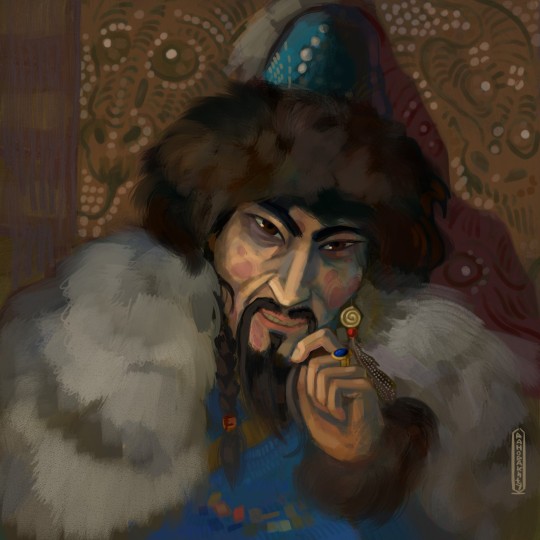





Happy birthday to me. The best present would be rebloging my arts!
#mongol empire#mongol history#mongolia#art#batu khan#batu#the golden horde#the roman empire#spqr#gaius caligula#mengukaan#shaman#tigellinus
23 notes
·
View notes
Text

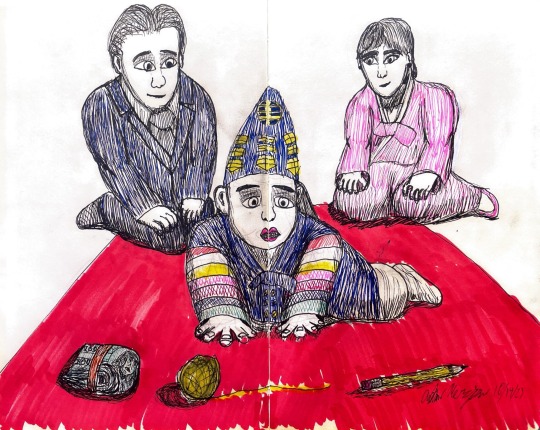



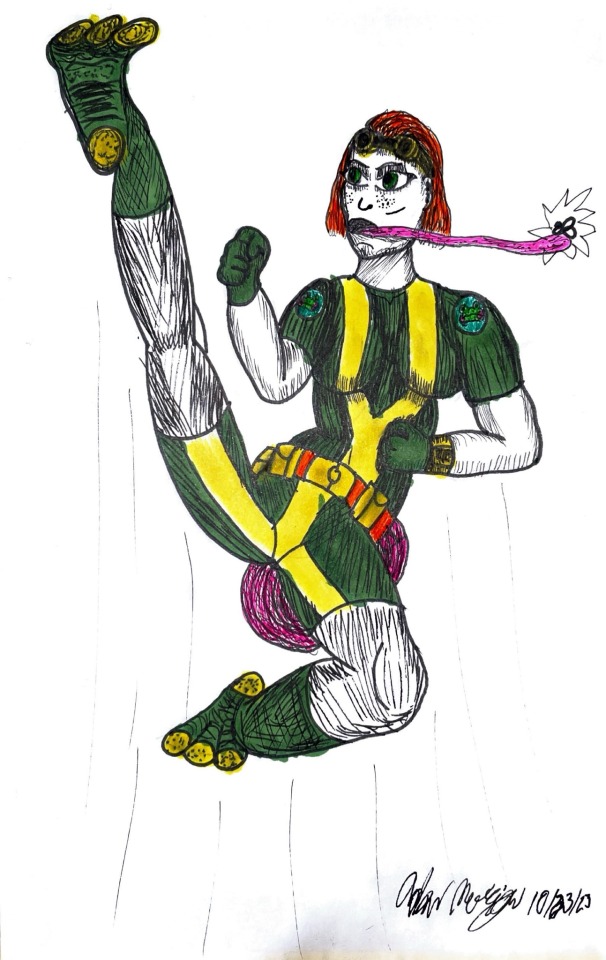


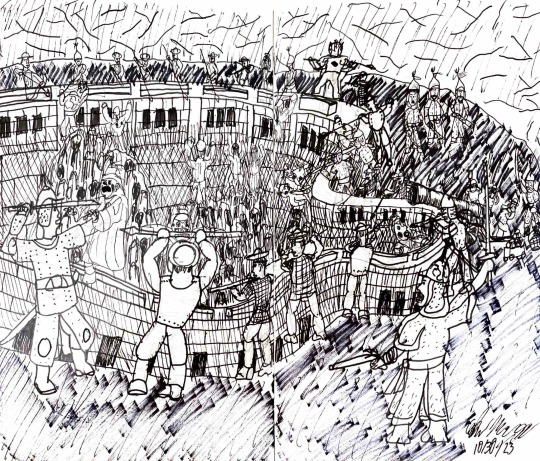
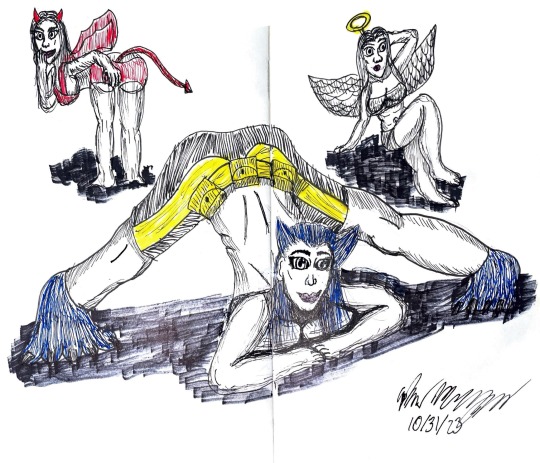
My #inktober2023 sketches.
#inktober 2023#korean history#marvel#iron man#emma frost#itchy and scratchy#the simpsons#zombie#kingdom#rwbyfanart#rwby au#black spiderman#spider woman#ghost spider#spider gwen#gwen stacy#miles morales#mongolia#mongol empire#mongol history#korean folk#korean culture#free gaza#free west bank#free palestine#israel hamas war#free gaza from hamas#cosplay#violet myers#sexy content
2 notes
·
View notes